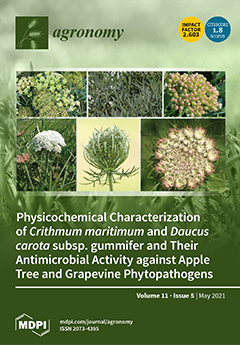Open AccessEditor’s ChoiceReview
Nocturnal Bees as Crop Pollinators
by
Guaraci D. Cordeiro, Rodolfo Liporoni, Carolina A. Caetano, Cristiane Krug, Carlos A. Martínez-Martínez, Herbeson O. J. Martins, Renan K. O. A. Cardoso, Fernanda F. Araujo, Priscila C. S. Araújo, Reisla Oliveira, Clemens Schlindwein, Eric J. Warrant, Stefan Dötterl and Isabel Alves-dos-Santos
Cited by 8 | Viewed by 5780
Abstract
Bees are typically diurnal but around 1% of described species have nocturnal activity. Nocturnal bees are still poorly studied due to bias towards studying diurnal insects. However, knowledge concerning their biology and role as crop pollinators has increased. We review the literature on
[...] Read more.
Bees are typically diurnal but around 1% of described species have nocturnal activity. Nocturnal bees are still poorly studied due to bias towards studying diurnal insects. However, knowledge concerning their biology and role as crop pollinators has increased. We review the literature on nocturnal bees’ traits and their host plants, and assess the crop pollination effectiveness of this neglected group. Nocturnal bees have visual adaptations to cope with low light intensities, and floral scents are a key sensory cue used to find their host flowers. Nocturnal bees generally show high flower constancy, the ability to vibrate flowers, and high transfer rates of pollen grains to stigmas. The flowers visited by nocturnal bees range from small radial and zygomorphic flowers to large brush blossoms; moreover, they visit plants with different flowering strategies. Nocturnal bees are effective pollinators of regional fruit crops in Brazil, such as cambuci (
Campomanesia phaea), guaraná (
Paullinia cupana), cajá (
Spondias mombin), and in North America of cultivated pumpkins (
Cucurbita species). However, they most likely are pollinators of several other crops. Strategies to host high numbers of nocturnal bees around cropping areas should be taken, such as preserving adjacent native forests, restricting soil management, providing food resources beyond crop flowers, and avoiding light pollution.
Full article
►▼
Show Figures





